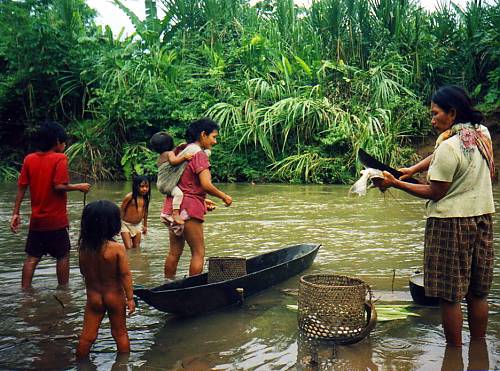Oral heritage and cultural manifestations of the Zápara people
Inscribed in 2008 (3.COM) on the Representative List of the Intangible Cultural Heritage of Humanity (originally proclaimed in 2001)
The Zápara people live in a part of the Amazon jungle straddling Ecuador and Peru. The Zápara developed in what is one of the most bio-diverse areas in the world and are the last representatives of an ethno-linguistic group that included many other populations before the Spanish conquest. In the heart of Amazonia, they have elaborated an oral culture that is particularly rich as regards their understanding of the natural environment. This is demonstrated by the abundance of their vocabulary for the flora and fauna and by their medicinal practices and knowledge of the medicinal plants of the forest. This cultural heritage is expressed through their myths,rituals, artistic practices and language. Their language is the depository of traditional knowledge and of oral tradition and constitutes the memory of the people and the region.
Four centuries of history, marked by the Spanish conquest, slavery, epidemics, forced conversions, wars and deforestation, have driven the Zápara people to near extinction. Despite these numerous threats, they have managed to preserve their ancestral knowledge. Intermarriage with Mestizos and other indigenous peoples (Quechua) has been especially instrumental in enabling the people to survive. But this dispersion has also resulted in a partial loss of their identity.
The current situation of the Zápara people is critical, and today they are in very serious danger of disappearing altogether. In 2001, their population numbered no more than 300 (200 in Ecuador and 100 in Peru), of whom only five, all aged over 70, still speak the Zápara language.








